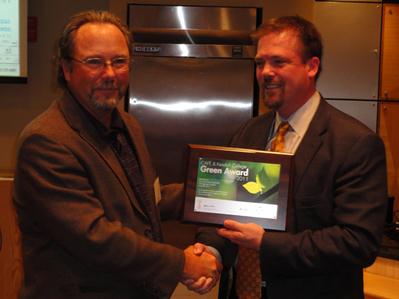Green Tomato: Sustainability Woven throughout the Curriculum
Thursday, 28 July 2011 09:23By Christopher Koetke, CEC, CCE
 Colorado State University’s hospitality-management program wins the third-annual CAFÉ/Kendall College Green Award.
Colorado State University’s hospitality-management program wins the third-annual CAFÉ/Kendall College Green Award.
From procurement to recycling and composting waste, from introductory classes to senior seminar, for the Colorado State University (CSU) Hospitality Management Program at Fort Collins, Colo., sustainability is always at the forefront of decision-making.
In recognition of those efforts, the program was presented with the 2011 CAFÉ/Kendall College Green Award at the recent CAFÉ Leadership Conference in Providence, R.I. The award included $1,000 from Kendall College, free registration at the conference and a commemorative plaque.

 Despite the challenges, we take joy in producing them.
Despite the challenges, we take joy in producing them. Foodchannel.com
Foodchannel.com New USDA guidelines lower pork cooking temperature by 15 degrees Fahrenheit, to the delight of chefs and consumers throughout America.
New USDA guidelines lower pork cooking temperature by 15 degrees Fahrenheit, to the delight of chefs and consumers throughout America. The Culinary Institute of America launches Healthy Flavors, Healthy Kids, a national culinary leadership initiative.
The Culinary Institute of America launches Healthy Flavors, Healthy Kids, a national culinary leadership initiative.